The Sensory Benefits of Sports!
Written by: Angie Voss, OTR
Sports for our sensory kiddos can be a wonderful, rewarding, and enriching addition to life. BUT not all sports are created equal, nor are our children's compatibility with all sports. Each child is unique in regards to sensory needs and challenges, so not all sports will be appropriate and meet those unique needs. Determining which sport may be best; group or individual, indoors or outdoors, etc...will likely be trial and error with eliminating the obvious not so good choices for your child's unique sensory situation. I have created a list of some common and some unique sports providing a few sensory benefits as well as some of the possible factors to consider when choosing the best sport for your child. I hope this inspires you to try something new with your child and to help make a decision on which sport to try first!
Gymnastics
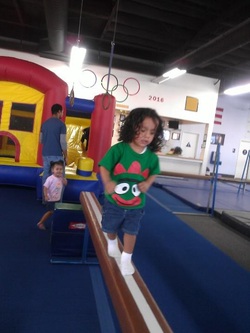
Sensory Benefits:
- Lower and upper body proximal stability and weigh shifting
- A huge dose of proprioceptive input, including joint traction and compression from hanging on bars to tumbling and jumping on the trampoline
- Vestibular input in various planes of movement, including inverting the head
- Additional vestibular input via balance
- Motor planning and bilateral integration
- Promotes body awareness and body in space
- Promotes full body flexion and prone extension
- May be a good choice for a sensory defensive child since it is not as loud and chaotic as some other sports choices
- Being indoors, keep in mind the echo factor and the added olfactory input (smells)
- Often predictable and routine driven by the class structure
Hockey

Sensory Benefits:
- HUGE amount of proprioception from the weight of the gear to the falling, checking, and crashing in to the boards
- Constant vestibular input from skating, in various planes of movement and shifting of body position
- Constant balance, lower body proximal stability, and weight shifting
- Visual motor development, eye-hand and eye-foot
- Motor planning and bilateral integration
- Body awareness and body in space
- Excellent for sensory seekers who need constant input
- Might be too loud, bright and/or too fast paced for some children
- Very challenging sport to learn, not appropriate for all children
- Not predictable or routine oriented
Soccer

Sensory Benefits:
- Vestibular input from running and constant shifting of body position
- Visual motor development via eye-foot coordination
- Bilateral integration and motor planning
- Body awareness and body in space
- Balance and lower body proximal stability and weight shifting
- May not be the best choice for a child with tactile defensiveness due to the brushing and bumping of bodies
- Can be an excellent choice for a sensory seeker due to the constant movement
- Keep in mind the outdoor sensory stimuli: sun, people using loud outdoor voices, whistles, wind, possible extreme temperature differences
- Playing the sport itself is somewhat unpredictable in nature
Baseball/T-Ball
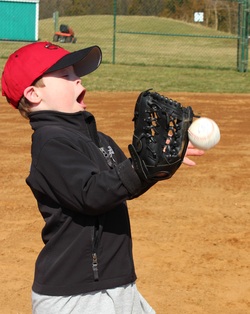
Sensory Benefits:
- Visual motor development
- Joint traction to the arms with throwing the ball and swinging of the bat
- Bilateral coordination and crossing midline
- Vestibular and proprioceptive input, but not as much as some other sports choices
- May not be the best choice for a sensory seeker since there is quite a bit of time spent waiting or in a stationary position
- A good choice for children needing a sport that is not too fast-paced
- Keep in mind the outdoor sensory stimuli: Bright sun, possible wind and sand blowing at the child from the field
- Not as loud as some other sport choices
Yoga
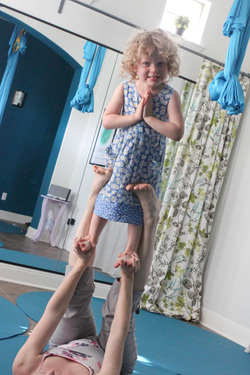
Sensory Benefits:
- Excellent full body proprioception, including joint traction and compression
- Many opportunities for inverting the head
- Excellent vestibular input via changes of body position and balance work
- A great choice for both sensory seekers and avoiders
- Calm, organized, structured, and soothing environment, which is great for all children
- Excellent for working on motor planning and body awareness
- Promotes lower body and upper body proximal stability and weight shifting
- Encourages prone extension and supine flexion through the different poses
- Typically a nice calm and quiet, soothing environment
- Very routine oriented, predictable
- Good for both sensory seekers and avoiders
- A great choice all around!
Football

Sensory Benefits:
- Excellent activity for full body proprioception through weight bearing and joint compression
- Vestibular input via running and quick body position changes
- Visual motor develop, both eye-hand and eye-foot through catching, throwing, and kicking
- Develops body and space and body awareness
- Works on auditory processing skills with the counts on the line of scrimmage
- The weight of the equipment and helmet can be very organizing and calming to the nervous system
- May not be the best choice for a child with tactile and/or auditory defensiveness due to the constant body to body contact and very loud calls and nature of the game
- The repetitive and predictable routine in practice and games can be very regulating for child
- Definitely a better choice for a sensory seeker vs. a sensory avoider
- Can be very demanding and intense, which may not suit your child
Golf

Sensory Benefits:
- Proprioceptive input via joint traction from swinging the club
- Excellent for visual motor development and visual perceptual development
- Works on LB and UB proximal stability and weight shifting
- Motor planning and crossing midline
- A good choice for a child who does best with an individual sport in a low stimuli environment
- May be best for a sensory avoider rather than a sensory seeker due to the slower pace
- Nice and quiet, which is a good choice for many children
- Probably not the best choice for a sensory seeker and craver
Archery

Sensory Benefits:
- Excellent for visual motor development and visual perceptual skills
- Great proprioceptive input via joint compression and traction to the arms
- Motor planning and bilateral coordination
- Upper body strength and shoulder stability
- Grip strength and prehension pattern development
- Lower body weight shifting and proximal stability
- Nice and low key and not fast-paced, may be a great choice for a sensory avoider
- Sensory stimuli to keep in mind: bright sun and possible wind
- Very rhythmical, repetitive, and predictable in nature which may serve as an excellent sensory anchor for the child
Mountain Climbing and Hiking

Sensory Benefits:
- Excellent for proprioceptive input for the entire body
- Vestibular input with emphasis on balance and changes in body position
- Can be very regulating, soothing, and organizing for the nervous system
- Works on motor planning
- Body in space and body awareness
- Bilateral integration
- Nice and quiet, calm, soothing
- Connecting with nature is incredibly beneficial for the nervous system
- Self-paced
- May be challenging for a child with vestibular sensitivity and/or gravitational insecurity
Biking
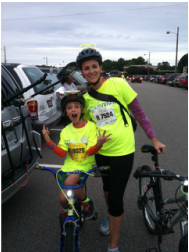
Sensory Benefits:
Factors to Consider:
- Vestibular and proprioceptive input
- Bilateral integration
- Lower body weight shifting and proximal stability
- Shoulder stability
Factors to Consider:
- Can be very challenging for a child with vestibular defensiveness and/or gravitational insecurity
- Self-paced, the child can gauge the intensity of the sport
- Sensory stimuli factors: wind to face while riding, unpredictable tactile input (such as a bug hitting the face), bright sun
- Can be very regulating and soothing with its rhythmical, and repetitive nature
Speed Cup Stacking (How fun is this!)
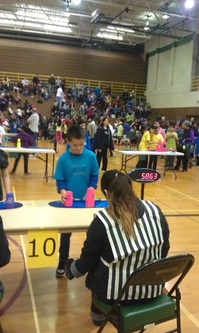
Sensory Benefits:
- Excellent visual motor development
- Visual perceptual and oculomotor development
- Cognitive, problem solving, and attention to task
- Upper extremity speed and dexterity
- A great alternative for those children who may struggle with the more active sports
- Being indoors, possibly in a gym, the echo and auditory input may be too much for some children
- May be too intense for those children who do not do well with a timed activity, can be stressful for some personalities
Running

Sensory Benefits:
Factors to Consider:
- An excellent source of proprioceptive and vestibular input
- Lower body proximal stability and weight shifting
- Bilateral integration
- Joint compression through the spine and lower body
Factors to Consider:
- Self-paced
- Very predictable and rhythmical which can be very soothing and regulating for the nervous system
- Some may prefer the sport in a racing type setting, or just a personal experience
- Low stimuli environment compared to some sport choices
Martial Arts
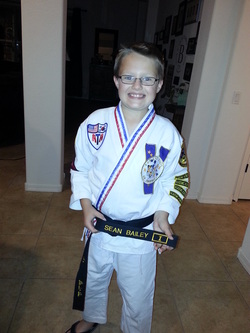
Sensory Benefits:
Factors to Consider:
- Great full body proprioception via joint traction and compression
- Vestibular input with an emphasis on balance
- Promotes body awareness and body in space
- Motor planning
- Bilateral integration and crossing midline
- Lower body proximal stability and weight shifting
Factors to Consider:
- A structured, routine based predictable in nature sport which is typically very calming and regulating for the nervous system
- The mirrors may be intimidating or uncomfortable for some children.
- A good choice for a sensory avoider, although may not be the best choice for a seeker
Ballet and Dance
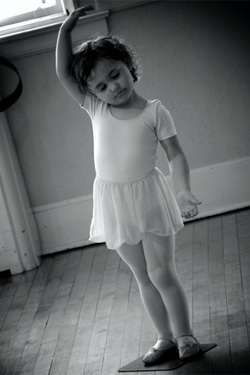
Sensory Benefits:
Factors to Consider:
- Proprioception via stretching and joint compression and traction
- Vestibular input in various planes with many changes in head and body position
- Promotes body awareness and body in space
- Motor planning
- Works on auditory processing while dancing to the music
- Facilitates prone extension and full flexion
Factors to Consider:
- May have too many competing sounds for some children, hearing the teacher instruct and the music at the same time.
- Routine oriented which is often calming and soothing for the nervous system
- Self-expression which may be very therapeutic for the child
- Keep in mind the large mirrors may be uncomfortable and overwhelming for some children
Skateboarding/Scootering

Sensory Benefits:
- Constant vestibular input with an emphasis on balance
- Full body proprioceptive input
- Bilateral coordination
- Shoulder stability and grip strength
- Motor planning
- Body in space concept
- Visual perceptual development and oculomotor control
- Self-paced, the child can control the intensity and challenge
- May be too difficult for a child with vestibular defensiveness and/or gravitational insecurity
- Scootering is a much better place to start vs skateboarding for beginners
Rock Climbing
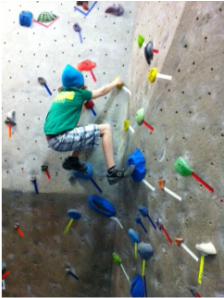
Sensory Benefits:
Factors to Consider:
- Excellent full body proprioceptive input
- Encourages full body flexion
- Upper and lower body proximal stability and weight shifting
- Motor planning and problem solving
- Visual spatial awareness
- Bilateral integration and crossing midline
Factors to Consider:
- Self-paced in a low stimuli environment
- Can be indoors or outdoors, which can cater to the sensory preferences
- May be very difficult for a child with vestibular sensitivity and/or gravitational insecurity
- Great choice for a sensory seeker and to promote self-regulation
Swimming

Sensory Benefits:
- Incredible dose of full body proprioception
- Vestibular input from constant changing of body position and head position
- Encourages prone extension and full flexion
- Bilateral integration and motor planning
- Oral motor and respiration control
- The smell of an indoor pool can be overwhelming to some children
- The overall setting can be unpredictable and quite multi-sensory with the tactile input from splashing and auditory input from all of the children
- An excellent choice for sensory seekers and to promote self-regulation
Track and Field

Sensory Benefits:
Factors to Consider:
- A great source of vestibular and proprioceptive input
- Motor planning, crossing midline, and bilateral integration
- Tactile input depending on the track and field event
- Upper body and lower body proximal stability and weight shifting
Factors to Consider:
- Self-paced and flexible when it comes to choosing the best event for the child
- Being outdoors, keep in mind the sun, wind, temperature as possible challenges
- The competition and timed factor may be too stressful for some children
Surfing
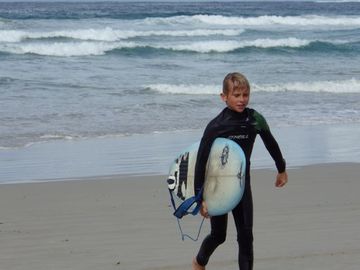
Sensory Benefits:
- A huge amount of full body proprioception and vestibular input
- Tactile input from the waves and water and sand is also significant
- Lower body proximal stability and weight shifting
- Visual perceptual skills
- Motor planning, body awareness and body in space
- VERY challenging sport to choose
- Constant unpredictable environmental stimuli
- Excellent for sensory seekers
Net Ball (An international sport similar to basketball)

Sensory Benefits:
Factors to Consider:
- Excellent for visual motor development and visual perceptual skills
- Proprioception from bouncing the ball(in basketball) and joint compression to the legs from jumping
- Motor planning and bilateral coordination
- Vestibular input from constant changes in body position, running, and jumping
Factors to Consider:
- Basketball being indoors, there are many loud sounds to contend with. Netball being outdoors, not as much
- Unpredictable tactile input from body brushing against one another
- A good choice for a sensory seeker
- May be challenging for a sensory avoider from all of the various sensory stimuli
Skiing and Snowboarding

Sensory Benefits:
Factors to Consider:
- Constant vestibular and proprioceptive input
- Works on lower body proximal stability and weight shifting
- Motor planning and body in space
- Visual motor and visual perceptual development
Factors to Consider:
- Children who have difficulty regulating temperature may not find this sport appealing
- Tactile input to the face may be difficult for some, from the spraying snow and the mask
- Self-paced
- A nice low auditory environment, although the extra bright sun may be a factor
